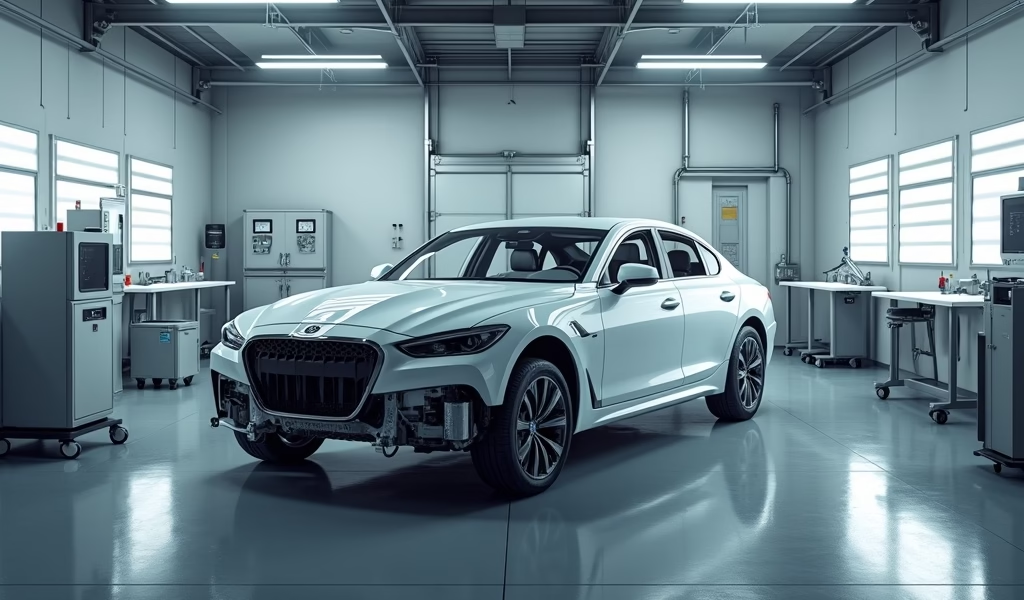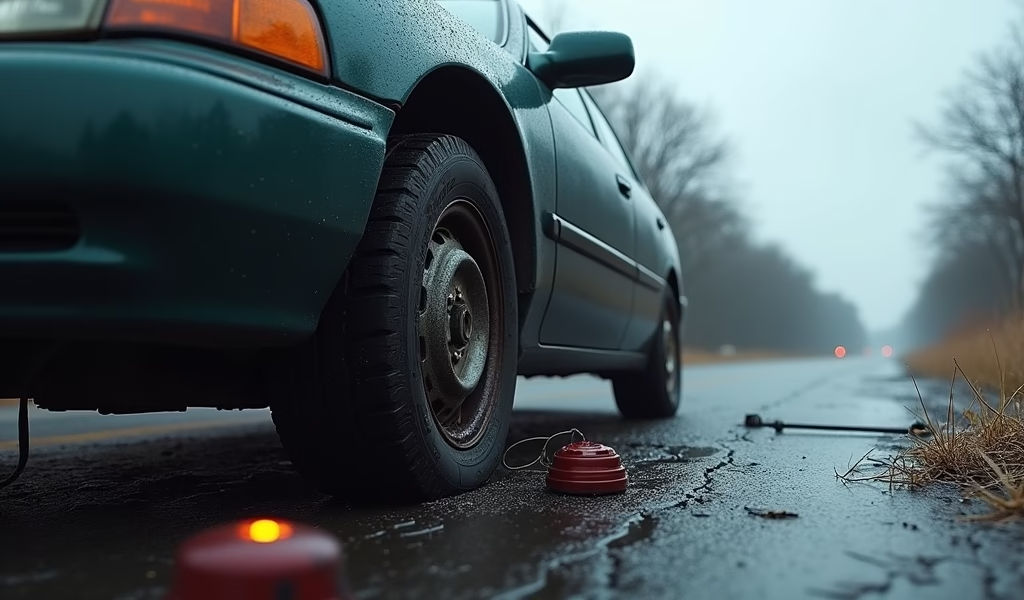Overview
This article details five critical vehicle maintenance areas that prevent accidents: tire care, brake system inspection, fluid checks, lighting systems, and windshield maintenance. Regular maintenance not only prevents costly breakdowns but also reduces accident risk, potentially saving thousands in damages and medical bills while protecting drivers from liability issues that could arise from neglected vehicle care.
Table of Contents
- Understanding Maintenance and Safety: Beyond the Obvious
- Tire Maintenance: Your First Line of Defense
- Brake System Inspection: When Stopping Matters Most
- Fluid Checks: The Lifeblood of Your Vehicle
- Lights and Signals: See and Be Seen
- Windshield and Wiper Maintenance: Clear Vision Saves Lives
- What To Do When Maintenance Failures Lead to Accidents
- Conclusion: Prevention Is Your Best Protection
- Frequently Asked Questions
Understanding Maintenance and Safety: Beyond the Obvious
I’ve spent 25 years under the hood, and I’ll tell you something most folks don’t realize – that “minor” maintenance issue you’ve been ignoring might be silently plotting your next encounter with a car wreck attorney. It’s not just about keeping your vehicle running; it’s about keeping you alive.
The cold, hard truth? According to the National Highway Traffic Safety Administration, vehicle component failure contributes to roughly 12-13% of all crashes. That’s thousands of accidents that proper maintenance could have prevented.
Think about this for a minute: Regular maintenance costs average $800-1,200 annually depending on your vehicle. A single moderate accident? Try $19,000 in property damage alone, before we even talk medical bills or legal fees. The math isn’t complicated.
Those maintenance records also become crucial evidence if you ever find yourself explaining what happened to insurance adjusters or in court. I’ve testified in cases where neglected maintenance directly impacted liability determinations. Trust me, you don’t want to be explaining to a judge why you ignored six months of brake squealing before rear-ending someone.
Let’s break down the five maintenance items that I’ve seen most frequently turn ordinary drives into life-altering events – and how you can prevent them without breaking the bank or becoming a mechanical genius.
Tire Maintenance: Your First Line of Defense

Your tires are literally where the rubber meets the road – the only four points of contact between your two-ton vehicle and the asphalt. Yet too many drivers treat tire care as optional.
Checking tire pressure should be as routine as filling your gas tank. Pick up an inexpensive pressure gauge (under $10) and check monthly and before long trips. Don’t know your target pressure? Look at the sticker inside your driver’s door jamb – not the maximum PSI printed on the tire itself.
For tread depth, the penny test works beautifully. Insert a penny with Lincoln’s head upside down into your tire tread. If you can see all of Honest Abe’s head, your tread is below 2/32 inch – the legal minimum in most states – and you’re driving on borrowed time.
Warning signs that you need new tires immediately include:
- Visible tread wear indicators (those flat rubber bars that appear when tread gets low)
- Cracks or bulges in the sidewall
- Excessive vibration during driving
- Uneven wear patterns (which often indicate alignment problems too)
I’ll never forget James, who came to my shop after his highway blowout. His eight-year-old tires still had decent tread but had become hard and brittle with age. The resulting accident totaled his car and left him with a broken collarbone. A $600 tire replacement would have prevented $15,000 in vehicle damage and months of physical therapy.
Age matters too – even low-mileage tires should be replaced after 6-7 years as rubber compounds degrade with time. Check the four-digit date code on your sidewall (like “1219” meaning the 12th week of 2019) to know your tire’s actual age.
According to NHTSA research on tire safety, properly maintained tires can improve handling, traction, and braking distance by up to 30% compared to worn tires – often the difference between a close call and calling a top-rated car accident lawyer.
Brake System Inspection: When Stopping Matters Most
If there’s one system I never cut corners on, it’s brakes. Your vehicle’s ability to stop reliably isn’t just important – it’s everything in an emergency situation.
Listen for these warning signs your brakes need attention:
- High-pitched squealing (your brake pad wear indicators crying for help)
- Grinding metal-on-metal sounds (you’ve worn through the pads completely)
- Vibration or pulsation when braking (warped rotors)
- Longer stopping distances than usual
- Brake pedal feels spongy or sinks toward the floor
- Dashboard brake warning light illuminated
Most manufacturers recommend brake inspections every 12,000 miles or annually. But driving habits matter – city driving with frequent stops demands more frequent checks than highway cruising.
Here’s what you might not know: Brake fluid absorbs moisture over time, lowering its boiling point and potentially causing brake fade during hard stops. Even if your pads look good, the fluid should typically be flushed every 2-3 years. When was your last brake fluid change? Most people can’t remember.
The physics is sobering: A vehicle with worn brakes traveling at 60 mph typically needs an additional 60-100 feet to stop compared to one with properly maintained brakes. That’s the length of a basketball court – the difference between stopping safely and plowing into cross-traffic.
I’ve seen too many families learn this lesson the hard way. The Millers brought their minivan in after rear-ending a stopped truck during a sudden traffic slowdown. Their severely worn brake pads and warped rotors failed to provide adequate stopping power. The accident resulted in their child suffering a concussion from the impact. The preventative brake job would have cost $350. The accident costs exceeded $30,000 – and that doesn’t account for the emotional trauma.
Fluid Checks: The Lifeblood of Your Vehicle
Your vehicle relies on several vital fluids that do far more than most drivers realize. Each serves critical functions that directly impact safety, not just longevity.
The essential fluids to monitor include:
- Engine Oil: Beyond lubrication, it helps cool critical components. Check your dipstick monthly. Oil that’s turned dark brown or black, or smells burnt, indicates it’s time for a change. Modern vehicles typically need changes every 5,000-7,500 miles with conventional oil, though some synthetics can go longer.
- Brake Fluid: This hydraulic fluid transfers force from your brake pedal to the actual brake mechanisms. Low fluid may indicate leaks, while dark, cloudy fluid suggests contamination. Both compromise stopping power.
- Coolant/Antifreeze: Prevents both freezing and overheating while protecting your engine from corrosion. Check levels when the engine is cool, and watch for a sweet smell or visible leaks.
- Power Steering Fluid: Enables effortless turning. Low levels cause steering to become suddenly heavy – dangerous when navigating unexpected obstacles.
- Transmission Fluid: Lubricates transmission components and assists in smooth gear shifts. Burnt-smelling or dark fluid signals trouble.
While DIY checks help, they don’t replace professional assessment. Many fluid-related issues are only detectable with specialized testing equipment that measures contamination levels and chemical breakdown.
I’ll never forget Mike, who drove his sedan through summer with deteriorating coolant. The eventual overheating led to a sudden engine shutdown on a busy interstate. Unable to maintain speed or reach the shoulder quickly, his disabled vehicle was struck from behind. What should have been a simple $100 coolant service resulted in a totaled vehicle and weeks in physical therapy.
A Consumer Reports study on vehicle fluids found that up to 38% of vehicles on the road have at least one fluid that needs attention. Don’t be part of that statistic.
Lights and Signals: See and Be Seen
Your vehicle’s lighting system serves dual purposes: helping you see the road and helping others see you. Yet many drivers check them only when they burn out completely.
Every month, walk around your vehicle with the lights on, checking:
- Headlights (both high and low beams)
- Brake lights (have someone help or use a reflective surface)
- Turn signals (front and rear)
- Hazard lights
- Reverse lights
- License plate lights
Replacing most bulbs is an inexpensive DIY job, though some newer vehicles with integrated LED systems may require professional service. Most auto parts stores will help you select and install the correct replacement bulbs if you’re not comfortable doing it yourself.
Beyond convenience, proper lighting is legally mandated. Every state has specific requirements for vehicle lighting, and citations for non-functioning lights can cost you hundreds. More importantly, these laws exist because lighting failures dramatically increase accident risk.
One of the most common accident scenarios I see involves rear-end collisions during dawn or dusk when a vehicle with non-functioning taillights becomes nearly invisible to following traffic. Another frequent scenario involves turning without operational signals, leading to side-impact collisions as other drivers fail to anticipate your movement.
The National Highway Traffic Safety Administration estimates that proper vehicle lighting could prevent up to 15% of nighttime collisions. That’s thousands of crashes – and potential injuries – prevented with simple bulb replacements.
Windshield and Wiper Maintenance: Clear Vision Saves Lives

Clear visibility is non-negotiable for safe driving, yet windshield maintenance receives minimal attention until conditions become dangerous.
Wiper blades should be replaced every 6-12 months, or whenever they leave streaks, skip across the glass, or make chattering noises. The rubber compounds degrade from exposure to sunlight and environmental contaminants even when not in use.
Windshield damage requires prompt attention, as small chips can spread into vision-obstructing cracks with temperature changes or road vibrations. Most insurance policies cover chip repair at no cost, as it prevents more expensive windshield replacement later.
Keep your washer fluid reservoir filled with proper solvent—not just water—to cut through road grime and insect residue that can suddenly obstruct vision. In winter climates, use specialized winter formula to prevent freezing.
The consequences of neglected visibility maintenance become particularly evident in adverse weather. Sarah, a customer from Seattle, learned this lesson during a heavy rainstorm when her worn wipers failed to clear water effectively. The momentary blindness led to a collision with a stopped vehicle ahead. What makes this accident particularly tragic is that new wiper blades would have cost less than $30.
During nighttime driving, dirty windshields amplify glare from oncoming headlights, potentially blinding you temporarily. A clean windshield, functional wipers, and full washer fluid are essential safety elements, not just convenience features.
The American Automobile Association found that poorly maintained windshield systems contribute to as many as 1 in 20 weather-related accidents – incidents that proper maintenance could have prevented.
What To Do When Maintenance Failures Lead to Accidents
Despite your best prevention efforts, accidents can still happen. If maintenance issues contribute to a collision, follow these critical steps:
1. Safety first. Move to a safe location if possible and check for injuries. Call emergency services if needed.
2. Document everything. Take photos of the accident scene, vehicle damage, and any visible maintenance issues that may have contributed (like bald tires or brake problems). These can be invaluable later.
3. Exchange information with other involved parties, including contact details, insurance information, and vehicle information.
4. File a police report, being factual but careful not to admit fault. Simply report what happened objectively.
5. Preserve evidence of your maintenance history—or lack thereof. This includes service receipts, inspection reports, and any communication with repair shops.
6. Contact an auto wreck lawyer if injuries occurred or significant property damage resulted. This becomes especially important if your maintenance history might be scrutinized.
Your maintenance records significantly impact your case. Regular service documentation demonstrates responsible ownership and can help defend against claims of negligence. Conversely, ignored warning lights or skipped services can severely undermine your position if litigation occurs.
Remember: courts often view neglected maintenance as a form of negligence. If your failure to maintain your vehicle contributed to an accident, you could face increased liability – something I’ve seen happen to good people who simply procrastinated on necessary repairs.
Conclusion: Prevention Is Your Best Protection
After three decades in this business, I’ve seen how the smallest maintenance issues can lead to the biggest tragedies on the road. The five critical areas we’ve covered—tires, brakes, fluids, lights, and visibility systems—form your vehicle’s safety foundation.
Regular maintenance isn’t just about avoiding mechanical breakdowns or extending your vehicle’s life. It’s about preventing the physical, emotional, and financial devastation that follows serious accidents. The cost comparison is stark: a few hundred dollars in preventative maintenance versus potentially tens of thousands in accident-related expenses.
While knowing how to find a good car wreck lawyer is important, investing in prevention makes that knowledge hopefully unnecessary. The choice is clear: spend a little time and money now or risk everything later.
I encourage you to schedule a comprehensive maintenance check-up today. Many shops offer free inspections that can identify potential problems before they become dangerous. Your future self—safely arriving at your destination without incident—will thank you.
Remember, in automotive safety, an ounce of prevention truly is worth far more than a pound of cure. Drive safe, maintain well, and keep your focus on the road ahead – not in a lawyer’s office discussing what went wrong.
Frequently Asked Questions
When should I contact a car wreck lawyer after an accident?
Contact a car wreck lawyer immediately after seeking medical attention if you’ve suffered injuries or significant property damage. Early legal consultation ensures evidence is preserved and your rights are protected from the start.
Can poor vehicle maintenance affect my accident claim?
Absolutely – neglected maintenance can be considered negligence that might reduce your compensation or increase your liability. Insurance companies and courts often examine maintenance records when determining fault in accidents.
What maintenance records should I keep to protect myself legally?
Keep all receipts and documentation of regular oil changes, tire services, brake work, and major repairs. Digital or physical copies of these records can strengthen your position if maintenance becomes an issue in accident litigation.
How do I find the best car wreck lawyer for my case?
Look for attorneys who specialize specifically in auto accidents and have a proven track record with cases similar to yours. The best car wreck lawyers offer free consultations, work on contingency fees, and have strong client testimonials.
Can I be held liable if my car malfunctions and causes an accident?
Yes – if the malfunction resulted from negligent maintenance that you reasonably should have addressed. Vehicle owners have a legal duty to maintain their vehicles in safe operating condition for public roadways.

